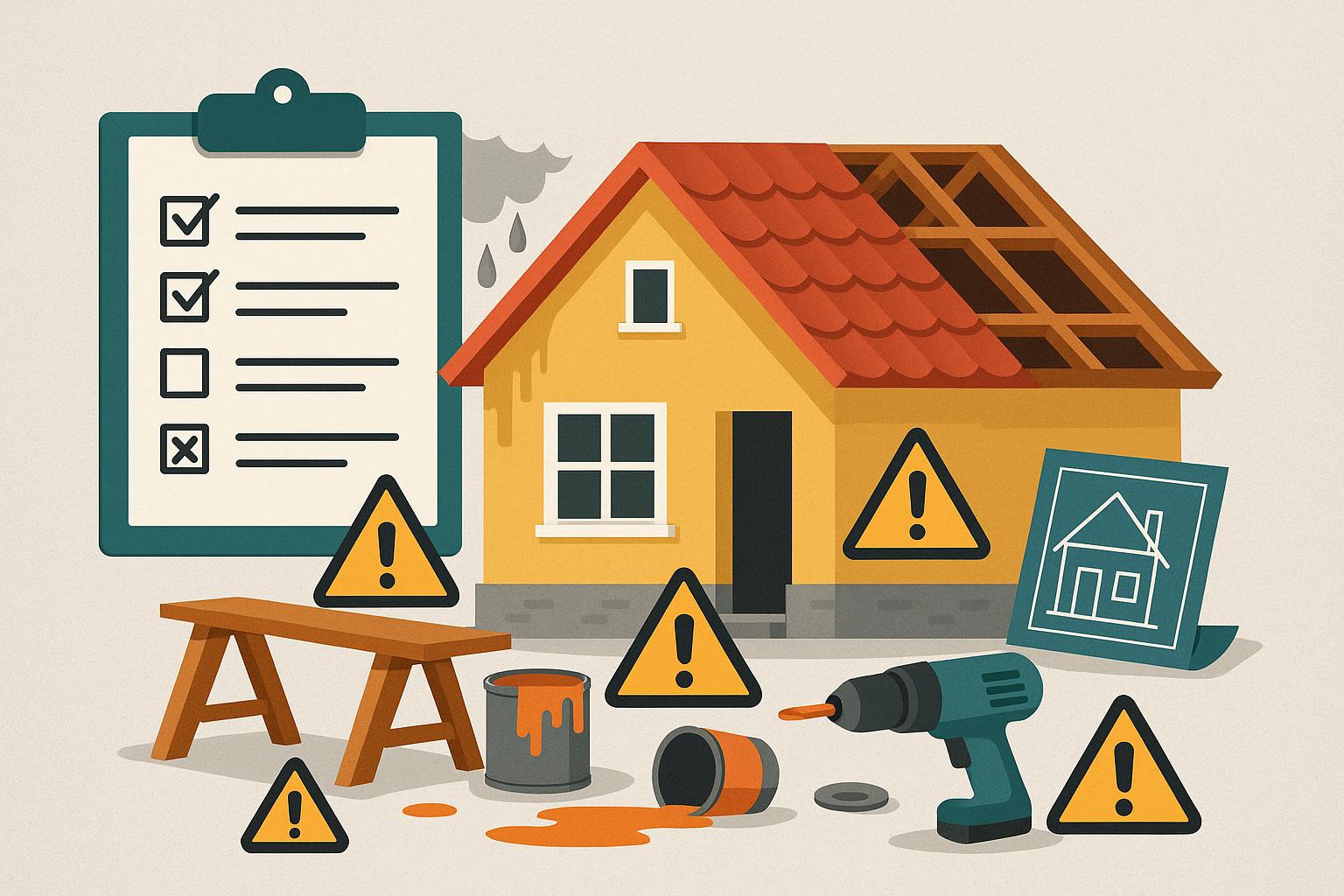Strategies for successfully navigating home renovations are important for any homeowner looking to improve their space without unnecessary stress or expense. By understanding the frequent pitfalls that arise during the renovation process, you can take proactive steps to avoid them and ensure a smoother experience. From budgeting accurately to selecting the right contractors, this guide will arm you with practical insights that will empower you to make informed decisions and ultimately transform your home into the sanctuary you envision.
Understanding Common Home Renovation Pitfalls
While commenceing on a home renovation, you may encounter various pitfalls that can derail your plans and increase stress. Understanding these common challenges, such as budget overruns and underestimating timeframes, is necessary for executing a successful project. By recognizing what to watch for, you can better navigate potential obstacles and ultimately achieve your renovation goals with fewer setbacks.
Budget Overruns
Below are some of the key factors that lead to budget overruns during renovations. Often, unexpected issues arise, such as structural problems or the need for permits, which can significantly inflate costs. It’s vital to allocate a contingency fund to cover these surprises and ensure your renovation stays on track financially at River Modern.
Underestimating Timeframes
Around the excitement of a renovation, it’s easy to overlook how long tasks can actually take. Many homeowners tend to underestimate the time required for planning, sourcing materials, and completing the work. Rushing to finalize dates without consulting professionals can lead to delays and frustration.
Renovation projects often extend beyond initial timelines due to unforeseen complications, weather delays, or the availability of contractors. It’s wise to establish a realistic schedule that accounts for potential setbacks. By being proactive and incorporating buffer time, you can mitigate stress and enjoy a smoother renovation experience at Narra Residences.
Planning Your Renovation Project
It is crucial to approach your home renovation with a detailed plan. Begin by assessing your space and determining what changes will have the most significant impact. Create a strategy that outlines your goals, budget, and timeline. By planning meticulously, you can mitigate potential setbacks and make informed decisions throughout the remodeling process.
Setting Realistic Goals
Around your renovation project, it’s vital to set achievable goals. Consider your budget, the time you can dedicate, and the scope of the project. Setting realistic expectations will help you stay motivated and prevent overwhelm while ensuring that your project aligns with your vision and available resources.
Researching Local Regulations
Across your renovation planning, you must familiarize yourself with any local regulations that may affect your project. This includes permits for structural changes, zoning laws, and building codes that ensure safety and compliance.
But navigating local regulations may feel daunting. Researching the necessary permits and guidelines can help you avoid fines or having to redo work that doesn’t meet local standards. Check with your municipality or consult a professional to ensure your renovations comply with all legal requirements. Taking these steps upfront not only saves time in the long run but also protects your investment in your home.
Hiring the Right Professionals
One of the most significant steps in your home renovation is hiring the right professionals to bring your vision to life. The right contractor can make the difference between a seamless project and a frustrating experience. Investing time in selecting qualified and reputable individuals will not only enhance the quality of your renovation but also provide peace of mind throughout the process.
Vetting Contractors
Below are some steps you can take to vet potential contractors effectively. Begin by checking their licenses, insurance, and credentials. Then, ask for detailed quotes and timelines, ensuring they align with your expectations. Conduct interviews to gauge their communication style and professionalism, and confirm their experience with projects similar to yours.
Importance of Reviews and References
Vetting contractors isn’t complete without seeking out reviews and references. These insights can reveal a contractor’s reliability, quality of work, and overall client satisfaction.
Reviews can help you capture a broader view of a contractor’s work ethic and capability. Take advantage of online platforms and social media to read what previous clients say about their experiences. Additionally, ask contractors for specific references and follow up with those clients to discuss their project details. This thorough approach will provide you with valuable information, making it easier to choose someone who will deliver excellent results for your renovation.
Effectively Managing Your Renovation
Despite the excitement that comes with home renovation projects, effective management is vital to avoid costly setbacks. You will want to implement structured planning, maintain open lines of communication, and regularly assess progress. By taking these steps, you ensure your project stays on schedule and within budget, ultimately leading to a successful transformation of your home.
Communication with Contractors
Behind every successful renovation is clear and consistent communication with your contractors. Establishing a strong rapport allows you to express your ideas and expectations while also addressing any concerns that may arise. Make it a priority to schedule regular discussions, ensuring everyone is on the same page throughout the project.
Regular Progress Checks
Above all, conducting regular progress checks allows you to stay informed about the status of your renovation. It gives you an opportunity to catch any issues early and provides a platform for discussing any changes that may be needed. Investing a little time for these evaluations can save you headaches later on.
Your regular progress checks should involve on-site visits and discussions with your contractors. This will help you to observe the workmanship and assess whether it aligns with your vision. Take notes during these assessments to document progress and any discrepancies. Encourage open dialogue to facilitate adjustments and ensure the project remains on track according to the original timeline and budget.
Choosing Quality Materials
To create a successful home renovation, prioritize choosing quality materials that will withstand the test of time. Investing in superior products not only enhances your space aesthetically but also ensures functionality and longevity. Your home is an investment, and selecting durable materials can save you from frequent repairs and replacements, ultimately preserving your home’s value.
The Cost-Benefit Analysis
Analysis shows that while quality materials may have a higher upfront cost, they often result in significant long-term savings. By making informed choices, you can avoid spending more on replacements and repairs in the future. A detailed evaluation of the initial investment against potential maintenance costs can unearth beneficial insights to guide your decisions.
Long-Term Value vs. Immediate Savings
Besides short-term budget considerations, it’s important to think about long-term value when choosing materials for your renovation. Opting for low-cost options may initially appeal to your wallet but can lead to more expenses down the road.
Materials that promise durability and efficiency can enhance your home’s market value significantly. For instance, investing in high-quality flooring or roofing might be more expensive at first but can greatly reduce costs for maintenance and replacements later. Evaluating the total cost of ownership, rather than just the initial outlay, empowers you to make smarter choices that benefit you for years to come.
Final Touches and Finishing Up
Not rushing through the final touches can make a significant difference in the overall quality of your home renovation. This phase is not just about aesthetics; it ensures all elements harmonize and reflect your vision. Take your time to inspect details like paint finishes, hardware placements, and any last-minute adjustments for a polished, professional appearance.
Preparing for the Final Walkthrough
To ensure a smooth final walkthrough, compile a checklist of items to review with your contractor. This list should include everything agreed upon in your contract. Carefully inspect all work and installations to confirm they meet your expectations before signing off.
Addressing Punch List Items
With a detailed punch list in hand, you can tackle any outstanding tasks that require attention before the project wraps up. This list typically includes small repairs or adjustments not completed during the renovations.
But addressing punch list items is not merely about checking boxes; it’s your opportunity to ensure everything aligns with your vision and standards. Prioritize items based on their significance and communicate openly with your contractor to clarify any ongoing concerns or minor tweaks. This step is key to achieving a finished space that feels tailored to your needs.
Summing up
From above, it’s clear that avoiding common home renovation pitfalls requires you to plan meticulously and communicate effectively with your contractors. Embrace thorough research, establish a realistic budget, and choose materials wisely to ensure long-lasting results. By being proactive and informed, you can navigate challenges and make your renovation experience rewarding instead of stressful, ultimately transforming your space into your dream home.

